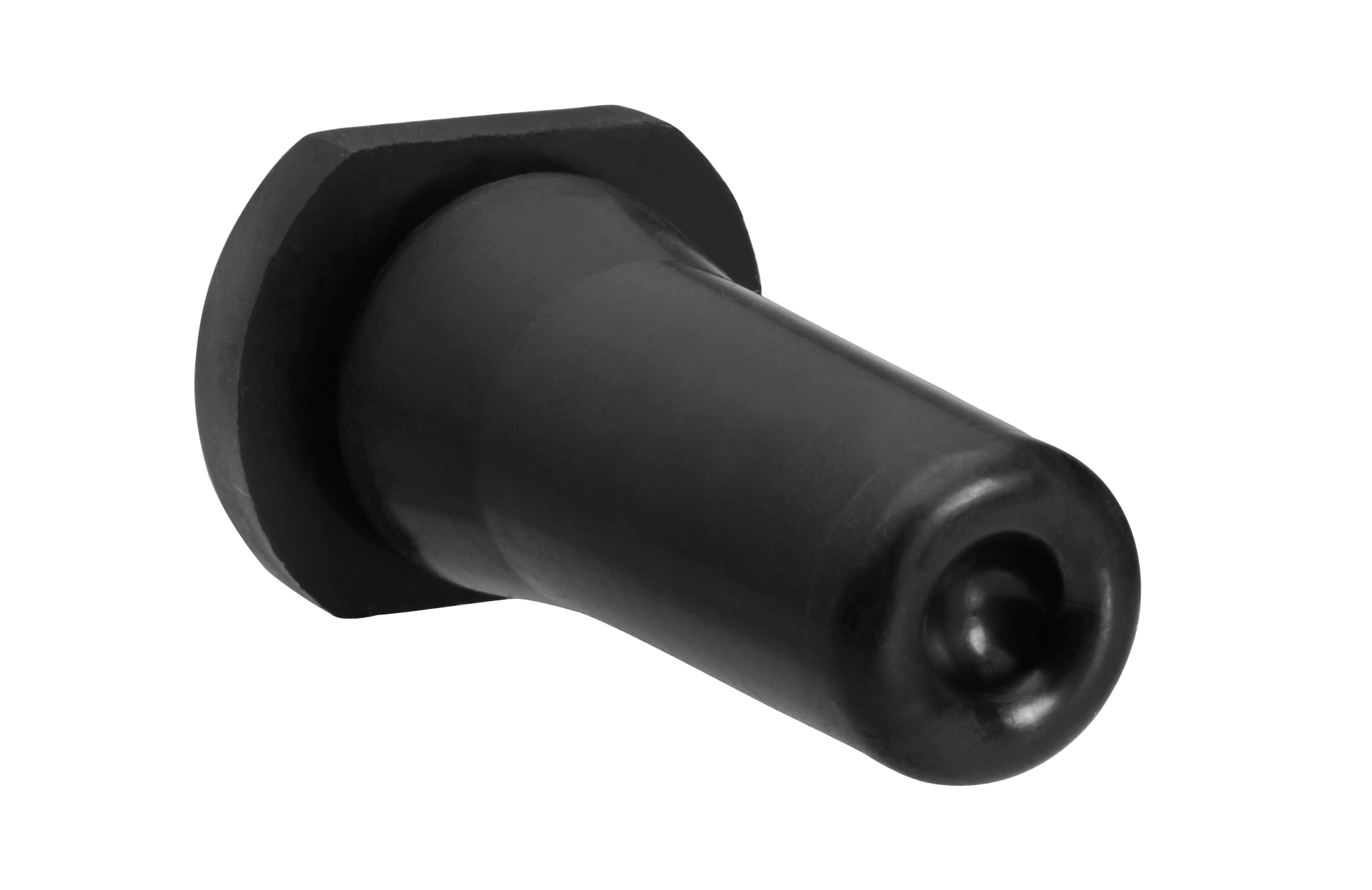SKU:Product Code: 900100
Milk Bar™ Teat
Milk Bar™ Teat
Milk Bar™ Teats work in harmony with the calf’s digestive system to improve calf health.
With our specialized flow control, calves create more saliva to boost immunity and strengthen digestion.
Improved digestion produces heavier, more robust calves to reduce cost and management. The all important lactose absorption is increased which reduces scours/ diarrhoea. The controlled flow satisfies the calf's natural suckling instinct. When they are satisfied after feeding they no longer suckle each other after feeding (cross suckling).
How to use
How to use
It is important for calf health that milk is delivered at the right speed to optimise digestive health and performance.
As a teat ages, the rubber becomes softer and milk flow increases. As a calf approaches weaning the more developed digestive system can manage this slightly increased flow but for young calves, a faster flow impacts health and can result in cross suckling and nutritional scours.
Seasonal/ batch rearing: we recommend you start the season/ batch with new Milk Bar™ Teats in your feeders.
This minimises the disruption from a mid season teat change and gives calves the perfect flow from start to finish. All year round feeding: we recommend you start each new calf with a new Milk Bar™ Teat and keep this teat with this calf until weaning. Follow the Teat with One Calf - One Teat for best results!
How long will my teats last?
We have very strict quality control and only accept teats that perform at 20 hours on our feeding simulator. 20 hours is around 10 weeks or 140 feeds.
Any more than that, and it’s to hard for the calves to drink, any less and the teats don’t last, it’s a finely tuned process!
Depending on what system you use on your farm will determine how long your teats will last.
If you feed individually and use the Follow the Teat system then your teats will last from birth till weaning.
If you are feeding 100 calves using only a couple of Milk Bar™ 10 feeders, then the teats will need to be replaced more frequently.
The calves will tell you when the teats have become soft and need replacement. As the milk flow increases they will start to suck on each other or their surroundings (cross suckling). As soon as you start to see cross suckling, change your teats to prevent the next stage of fast flow which is diarrhoea.
How do I change my teats?
Milk Bar™ Teats have a pull through design to sit snugly against the feeder wall for optimum hygiene. However, while this is the most hygienic system, it can also be difficult to change teats!
Use a Teat Tool: This is by far the easiest method. The purpose designed Teat Tool plucks the teat from the feeder with minimal effort in seconds.
Pull the teats out by hand: When removing by hand, make sure to either pull the teat directly down or up. If you try to pull the teat straight out, it will be a tough job!
Cut the teats out: Make sure the blade is sharp and you use the knife away from you. Be sure to check the teat alignment is correct and the slit is vertical!
Cleaning
Cleaning
Milk is a difficult substance to clean off of surfaces. You need hot water to remove the fat, but the heat can bake the protein onto the surface. Using warm water to get rid of the protein leaves a film of fat. When fats and proteins stick to the surface of equipment, they form a biofilm, a nutrient-rich layer in which bacteria grow.
The biofilm protects bacteria from the cleaning process and results in equipment that appears clean but has bacteria on the surface. The cleaning process not only needs to remove fat and protein from surfaces but prevent the formation of a biofilm.
Made from renewable, high quality natural rubber, Milk Bar™ Teats are kinder to the environment. Natural rubber absorbs the milk fat and protein which can cause the teats to become softer and start to drip. The milk flow can become faster, decreasing calf performance.
Recommended cleaning: Use Milk Bar™ Detergent, a dishwashing detergent, or any other non-chlorine/ chloride dairy detergent twice a week. Important! Chlorine/chloride based dairy detergents degrade natural rubber which reduces teat performance and voids any warranty.
Rinse your teats with water.
Use a gentle detergent, following the manufacturer’s instructions. Do not use Chlorine/chloride based dairy detergents!
Using a brush, lightly scrub the outside of the teats making sure to bend the teats. By bending the teats, any milk gets pushed back inside the feeder so the detergent can make contact with the inside of the teat wall.
Rinse clean.
FAQs
FAQs
Milk Bar™ Teats come in packs of 10 and 50 pieces.
Milk Bar Teat: 50 pack Code 900112
Milk Bar Teats are made from a natural rubber with no synthetic or oil based rubber.
NZ Pat Apps 757655 & 767633 & 727000. NZ Des Reg. 420972 PCT Patent Applications NZ2016/050190 & NZ2020/050110 International Patents and Designs pending or apply.



